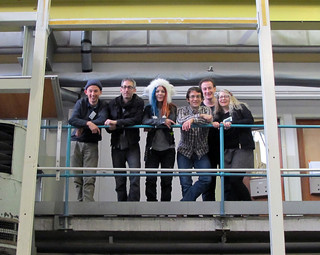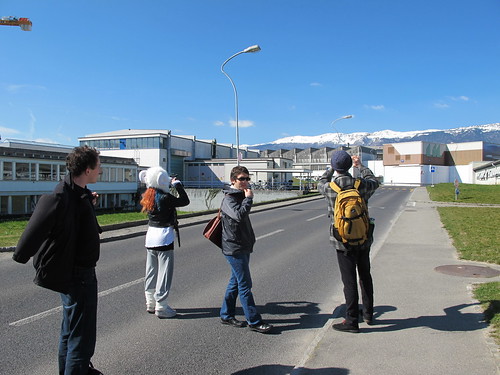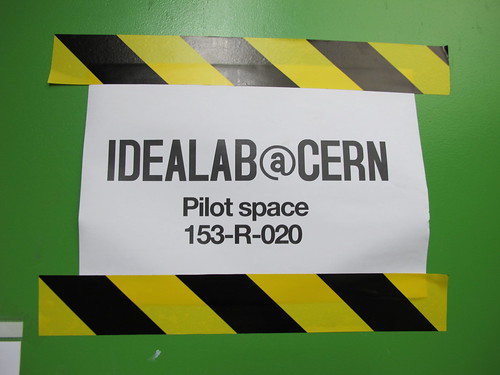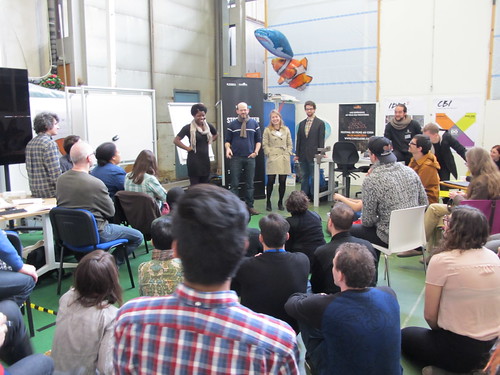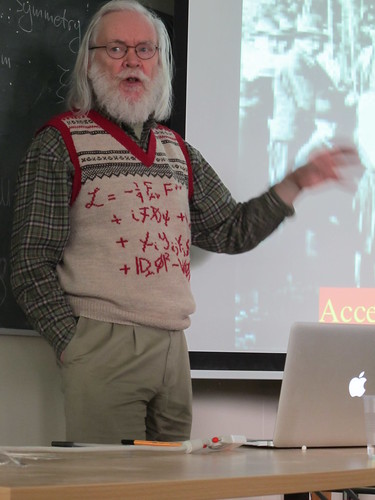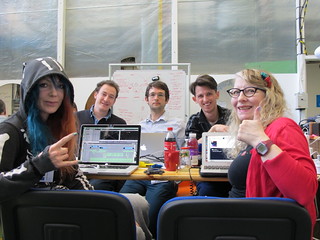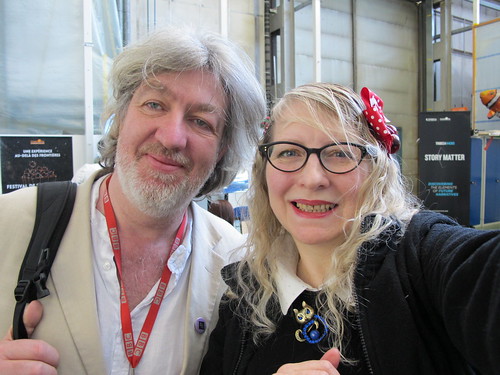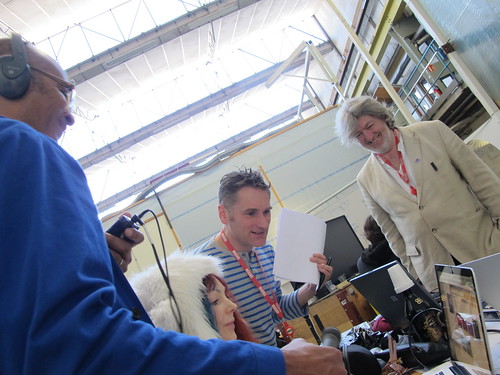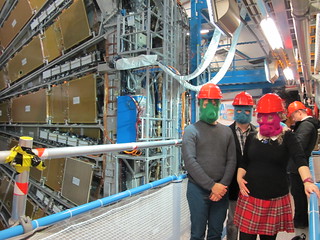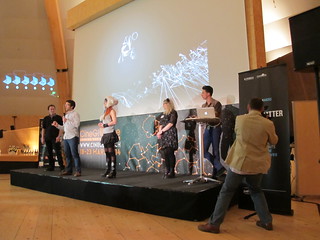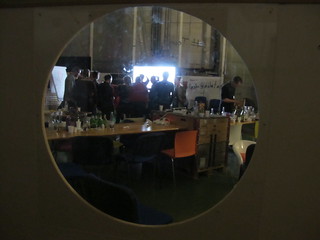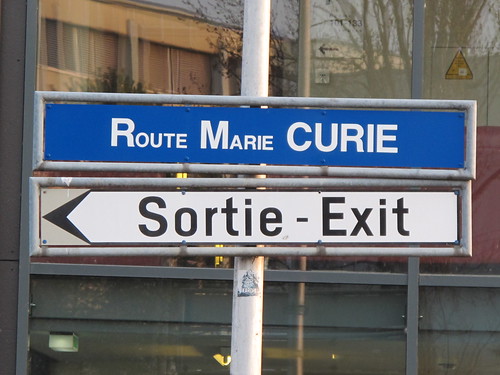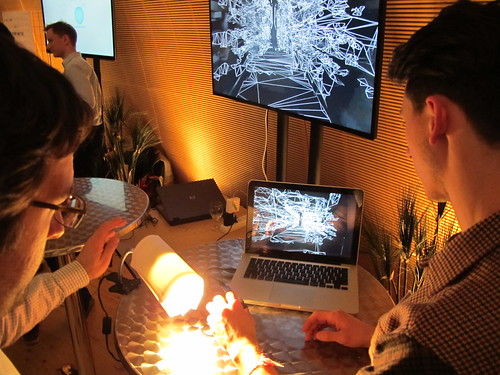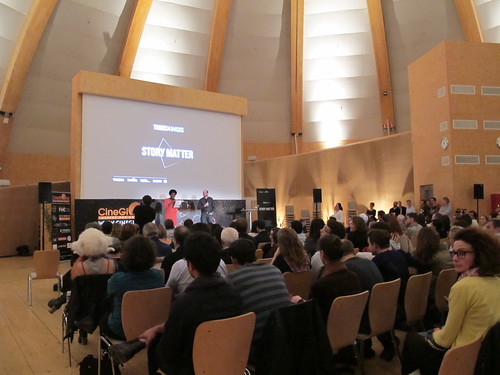In March 2014, I was over the moon to be selected to take part in the Tribeca Hacks and CERN’s StoryMatter Hackathon, at CERN in Geneva, Switzerland. It’s really hard to write about this amazing experience in a short blog post, which is why it’s taken so long to write, but I’ve had a go!
Watch this amazing documentary of our week at CERN – it gives me goosebumps!
After taking the CERN shuttlebus to the familiar sight of CERN reception at Meyrin, I can’t put into words how excited I was to be back at CERN, and then sitting in the Geneva afternoon sunshine and meeting the steady stream of other attendees arriving. I stayed in Building 38, one of the three buildings at CERN, which offer different kinds of visitor accommodation. Building 38 is the on site-hostel which is comfortable and next door to the main restaurant which is large and has lots of different food options for the discerning CERN employee or visitor.
On the evening of our arrival, we all met for dinner in the main restaurant building and found our teams. Each of the 7 teams had 6 members that included: 1 x blackbox, 1 x storyteller, 1 x scientist, 1 x designer and 2 x technologists. It was really exciting to meet my team, which we later named Team 3, in the flesh after spending a week or so chatting about our ideas on Google Hangout and exchanging emails. My team consisted of Ivaylo Getov (Blackbox, from NYC, USA), Jason Wishnow (Storyteller from NYC, USA), Jasmine Idun Lyman (Designer from Gothenburg, Sweden), Kyle Gustafson (Scientist from Lausanne, Switzerland) and Julian Maciejewski (Technologist from Warsaw, Poland) and me, another technologist from London, UK. As we were quite an opinionated bunch with much experience of developing and managing our own projects and creativity, it took a bit of time to brainstorm through the set of ideas that we’d each percolated over on the week or so on the run up to coming to CERN and agree on an idea to pursue.
We had a beautiful week at CERN weather-wise and awoke every morning to the sight of sunshine bouncing off the surrounding Alps and Jura mountains. On our first morning (and the rest) we were up very early (I got up at 5 or 6am every day) and were taken to the CERN Idealab, which would be our base for the coming week. Organisers: Opeyemi Olukemi, Manager, TFI Digital Initiatives, Amelie Leenhardt, Program Coordinator, TFI Digital Initiatives and Neal David Hartman, Artistic Director of CineGlobe Film Festival, led the introductions and outline of the week ahead. Our mission was to investigate new ways of telling science stories in a non-linear fashion, using technology, and our challenges were to come up with a prototype and/or a video to outline and document our projects to show at the end of the week at the prestigious CineGlobe Science Film Festival, held in the Globe at CERN, plus to strengthen connections between the disciplines of storytelling, technology, design and science, hence having a cross-disciplinary team.
Amazingly, we were allowed to rummage in a couple of skips of electronics to look for inspiration for our projects, we had so much fun finding odd devices, bits of old interfaces and computer boards!
On our first day we were wonderfully honoured to be given a talk on the history and work of CERN by Professor John Ellis, including an introduction to how the LHC works, particle physics and supersymmetry, he patiently answered lots of questions from us too. We were also very admiring of his Standard Model equation tank-top!
Our team decided to make an app telling the story of dark matter, our prototype uses interview clips that we recorded on site with Professor Martin Pohl, Director of the Nuclear and Particle Physics Department at the University of Geneva, and Team Leader on the AMS (Alpha Magnetic Spectrometer) project. The AMS is a particle detector bolted onto the International Space Station and is looking for evidence of antimatter and dark matter as it orbits the Earth.
Taken from our blurb, this reflects what we were interested in creating:
“Axion invites a player to immerse themselves in a unique audiovisual world and reflect on their journey. By allowing a player to discover the thoughts and statements of these scientists, we hope to draw a parallel between the visual poetry and the scientific language, illuminating a creative and expressive side of the discussion that is often not showcased, or that most people outside the scientific community do not hear. We want to leave the viewer not with answers, but with a sense that it is acceptable to be uncertain – realizing that the method of science is not the ultimate source of answers, but rather a way to ask questions.”
On day three, we had some special visitors who had come to hear about the StoryMatter Hackathon – it was none other than Bill Thompson, Gareth Mitchell and Colin Grant of BBC World Service technology programme Click Radio, they made a lovely radio programme about the StoryMatter Hackathon and interviewed us about our project. Another special visitor was David Reid from BBC Click TV programme, who made a film about the CineGlobe festival including coverage of the development of our apps at the Hackathon.
Our team worked long hours and had little sleep during the week as we figured out what we would make and how. We constructed our non-linear app, which we called Axion (a hypothetical elementary particle) by taking an XBOX Kinect strapped onto a camera into the depths of the tunnels under the buildings of CERN to film and turn images of the tunnels into a mesh construct, which the user of the app would navigate around to find interview clips from Professor Pohl. We made sound recordings from around CERN to be used in the soundtrack and searched for inspiring images from outer and inner space. My contribution was an sensing e-textiles device which was used to navigate around the mesh tunnels in the app and we called The Oracle!
During our week at CERN, it was Paolo’s birthday, he didn’t think anyone knew, but we put on a surprise birthday party for him, with caek, music and bubbles – it was wonderful and a very touching way to celebrate our new friend’s special day!
Our stay was full of amazing highlights and another was a tour of ATLAS (A Toroidal LHC Apparatus) http://home.web.cern.ch/about/experiments/atlas, which is one of the seven experiments attached to the Large Hadron Collider particle accelerator. We took a lift 100 meters underneath CERN’s Meyrin Campus to visit 7000-tonne ATLAS. As well as listening in awe to our guide and taking many photos, we also (with the permission of the guide) wore some of Jasmine’s knitted gas-masks and did a quick bit of filming for a film she was making back in Sweden. The knitted gas-masks gave a fun and surreal feel to our trip; they certainly amused the rest of our StoryMatter tour party!
Opeyemi and Amelie set us tasks for every day of the week, including setting our milestones and actions to enable us to stay focussed on our projects. Everyone worked so hard on their prototypes that the presentation evening at CineGlobe came all too soon, during the late afternoon we took our prototypes over to the CERN Globe and set them up and rehearsed among ourselves our presentations to do on stage to the 200+ attendees. We had a brilliant evening of presenting and a lovely cocktail event after where the attendees came round and partook in demos and chatted to the teams.
Afterwards we had a raucous party in the Idealab with trays of lasagne, pizza, beers, wine and more. The dancing went on all night and into the morning. I only had a few hours sleep before it was time to get up and pack to leave, I was very sad to leave CERN and it was heart wrenching to say goodbye to everyone. I had the most brilliant week, with the most talented and wonderful new friends, which was amazingly well organised by Opeyemi, Amelie and Neal, plus with the help of brilliant CERN staff and students too numerous to mention, who helped us locate tools, interviewees, beg and borrow kit and info. If I had the opportunity I would go back to CERN without hesitation and have keeping an eye out for jobs and other creative opportunities.
I have a ton of photos here if you’d like to see more of the antics we got up to!
Team3 are still developing our Axion app in our spare time and keeping in touch across 1000s of miles around the globe via Google Hangout and email. We are now using a NeuroSky MindWave EEG headset to allow the user to navigate the tunnels and interviews of our app. We have also interviewed more scientists to broaden the range of the stories about dark matter. We’ve also been applying for development grants and sponsorship to help us develop Axion. In April, Ivaylo and Jason took Axion to the Tribeca Interactive Festival, in New York, to demonstrate and allow attendees to experience it.
